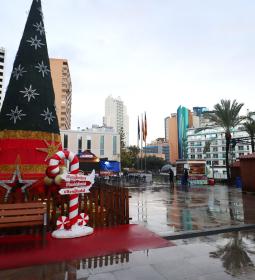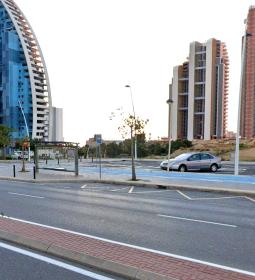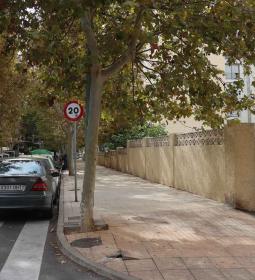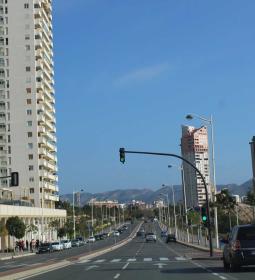The project, prepared by Hidraqua, amounts to 6.5 million and includes 17 actions and aspires to obtain financing from the PERTE for the digitization of the water cycle
Benidorm will opt for 4.8 million from Next Generation funds to improve the efficiency of the water cycle

The City Council is going to apply for the first call for subsidies for projects to improve the efficiency of the urban water cycle launched by the Ministry for the Ecological Transition, in which Benidorm aspires to attract 4.8 million euros of Next Generation funds to develop a large digitalization project for its water network. This is how the mayor, Toni Pérez, has advanced today, who explained that next week the plenary session will approve participation in this call, included within the PERTE for the digitization of the urban water cycle.
The agreement, ruled today by an information commission, establishes that Benidorm applies for this subsidy through the concession company, Hidraqua, which in turn has drawn up the project.
A project, Toni Pérez has advanced, which "proposes a total of 17 actions, for a total amount of 6,458,594 euros -plus VAT- and which mainly affect the digitization of the entire water network to improve its efficiency". Thus, “among the actions proposed and to be developed in the 2023-2025 period are advancing in the implementation of remote reading throughout the city; digitize and monitor the entire sewerage network, as is already the drinking water network; and install sensors to detect possible spills into the sea and ravines”.
In short, "we are talking about improving knowledge of water use, consolidating the comprehensive management of water resources, improving Benidorm's urban resilience, contributing to the objectives of the hydrological plan by further reducing consumption, generating employment for high technical qualification and to be even more transparent when it comes to water management”.
The mayor has pointed out that "for decades Benidorm has been a benchmark at a national and international level in water management, with percentages of yield and use that are well above the average". This position, he has deepened, "is the result of constantly investing in the improvement of infrastructures, and of applying state-of-the-art technological tools to water management."
"If our project is selected, we are going to make a series of actions and improvements that the municipal technicians and Hidraqua were already working on, in a maximum period of two years, a reality, some even in the development and implementation phase," he specified.
Likewise, he has stressed that with the development of this project "Benidorm will establish itself as a benchmark in the digitization of the water cycle in the national territory." A project that, in addition, "will serve as an example for other municipalities with similar characteristics, be it at the population level, infrastructure, volume of tourist activity, weather or hydrological management."
Planned actions
As already indicated, the 'Digitalization of the Benidorm water cycle' project proposes advancing the implementation of remote reading in all homes and companies in the city. Toni Pérez recalled that "since 2020, Hidraqua has been working on changing traditional meters to smart meters, which make it possible to know and control consumption in real-time and detect possible leaks. Although this meter renovation plan is well advanced, it is not finished, which is exactly what we want by including it in this project”.
The largest action planned is to deepen the digitization of the sewerage network. The mayor has indicated that "the objective is to install measurement sensors throughout the entire sewerage network to have greater surveillance and control in real time over the quality of the residual water and over the operation of the network itself." "The digitization of the drinking water network has allowed us to lose only 5% of our resources, when at the national level that percentage reaches 25%, and what is intended is to achieve very high levels of efficiency also in the sewerage ”.
He also highlights the proposal to monitor the possible arrival of water into the sea from the ravines or from the water network itself when episodes of heavy rain occur, detecting their duration and flow.
The rest of the actions contemplated in the project are the implementation of digital twins in the drinking water treatment stations (ETAP) of Benidorm and Terra Mítica, the modeling of urban basins to comply with the Municipal Action Plan against the Risk of Floods, and the automation of the water delivery points of the Marina Baixa Consortium in the DWTP of Terra Mítica, of the station itself and the supply tanks. It also plans to digitize the water quality sampling points in the supply network and leak search operations using sensors, as well as sensory and monitor ravines.
It also proposes increasing technological and innovative solutions to improve emergency management and early disturbances, predict the quality of coastal waters, identify possible spills, and control potential sources. The scope, monitoring, and results of all actions will be centralized in an information system.




